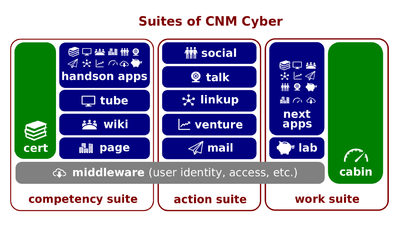Difference between revisions of "What Tech Report Is"
(→Script) |
(→Script) |
||
| Line 10: | Line 10: | ||
:Similarly to other [[report]]s, ''technical reports'' consist of [[report content]]s and [[metadata]]. Report's metadata particularly includes report's title, date, authors, owners, and so on. | :Similarly to other [[report]]s, ''technical reports'' consist of [[report content]]s and [[metadata]]. Report's metadata particularly includes report's title, date, authors, owners, and so on. | ||
| − | :[[SSUFI]] is one of | + | :[[SSUFI]] is one of many methods for report outlining. ''SSUFI'' is the acronym for [[report summary|'''S'''ummary]], [[report stage-setting section|'''S'''tage-setting]], [[report undertaking section|'''U'''ndertaking]], [[report finding|'''F'''inding]], [[report interpretation|'''I'''nterpretation]]. |
| − | :[[report summary| | + | :The [[report summary|summary]] is the condensed presentation of the substance of the [[report content]]. It allows its reader to decide whether he or she is interested in further reading. The ''summary'' briefly answers the question, "What the report changes." |
| + | |||
| + | :The [[report stage-setting section|stage-setting section]] describes the problem, background, situation, and/or the tasks for which the project or research was undertaken. This section answers the questions, "Who, where, when, and why undertook the research." | ||
| + | |||
| + | :The [[report undertaking section|undertaking section]] describes the actions, methods, assumptions, and procedures. This section answers the question, "How the research was undertaken." | ||
| + | |||
| + | :The [[report finding|finding]] describes the research results. This section answers the question, "What has been found." | ||
| + | |||
| + | :The [[report interpretation|interpretation]] describes conclusions, solutions, and implications that can be derived from the [[report finding]]s, as well as discussions that, possibly, represent different opinions, and, if requested, recommendations for further courses of action. | ||
| + | |||
| + | :The [[STAR Method]] is often used in [[job interview]]s. ''STAR'' stands for '''''S'''ituation, '''T'''ask, '''A'''ction, '''R'''esult'' is. In comparison with [[SSUFI]], it skips the summary and interpretations, as well as divides the ''stage-setting'' into ''situation'' and ''task''. The summary can be skipped since the ''STAR''-outlined report is usually given in response to [[interviewer]]'s request. | ||
| + | |||
| + | :[[White paper]]s may | ||
===Key terms=== | ===Key terms=== | ||
Revision as of 17:42, 17 November 2020
What Tech Report Is (hereinafter, the Lectio) is the lesson part of Technical Report Essentials lesson that introduces its participants to technical report concepts. This lesson belongs to the CNMCT Entrance section of the CNM Cyber Placement.
Content
The predecessor lectio is Narrated Fact vs Opinion.
Script
- A technical report is any report that presents those findings that are obtained while undertaking a research or another project. As documents, technical reports are similar to scientific reports. However, scientific reports are independently reviewed, usually by peers, before their publication, while technical reports rarely do.
- Similarly to other reports, technical reports consist of report contents and metadata. Report's metadata particularly includes report's title, date, authors, owners, and so on.
- SSUFI is one of many methods for report outlining. SSUFI is the acronym for Summary, Stage-setting, Undertaking, Finding, Interpretation.
- The summary is the condensed presentation of the substance of the report content. It allows its reader to decide whether he or she is interested in further reading. The summary briefly answers the question, "What the report changes."
- The stage-setting section describes the problem, background, situation, and/or the tasks for which the project or research was undertaken. This section answers the questions, "Who, where, when, and why undertook the research."
- The undertaking section describes the actions, methods, assumptions, and procedures. This section answers the question, "How the research was undertaken."
- The finding describes the research results. This section answers the question, "What has been found."
- The interpretation describes conclusions, solutions, and implications that can be derived from the report findings, as well as discussions that, possibly, represent different opinions, and, if requested, recommendations for further courses of action.
- The STAR Method is often used in job interviews. STAR stands for Situation, Task, Action, Result is. In comparison with SSUFI, it skips the summary and interpretations, as well as divides the stage-setting into situation and task. The summary can be skipped since the STAR-outlined report is usually given in response to interviewer's request.
- White papers may
Key terms
Closing
The successor lectio is Tech Report Matters.
